Flash mob
A flash mob or flashmob is a group of people who assemble suddenly in a public place and perform an unusual and seemingly pointless act for a brief time before quickly dispersing. They are often used for the purposes of entertainment, satire or artistic expression and are organized viatelecommunications, social media, or viral emails.
There is some question as to whether the term, coined in 2003, is applied to events and performances organized for the purposes of politics (such as protests), commercial advertisement, publicity stunts that involve public relation firms, or paid professionals. In these cases of a planned purpose for the social activity in question, the term smart mobsis often applied instead.
The term "flash rob" or "flash mob robberies", a reference to the way flash mobs assemble, has been used to describe a number of robberies and assaults perpetrated suddenly by groups of teenage youth.Bill Wasik, originator of the first flash mobs, and a number of other commentators have questioned or objected to the usage of "flash mob" to describe criminal acts,however, in a few reported cases, flash mobs have turned violent or led to criminal activity.
Flash mobs, like this pillow fight flash mob in Downtown Toronto (2005), are designed to surprise passers-by.
First flash mob
The first flash mobs were created in Manhattan in 2003, by Bill Wasik, senior editor of Harper's Magazine. The first attempt was unsuccessful after the targeted retail store was tipped off about the plan for people to gather. Wasik avoided such problems during the first successful flash mob, which occurred on June 17, 2003 at Macy's department store, by sending participants to preliminary staging areas—in four Manhattan bars—where they received further instructions about the ultimate event and location just before the event began.
More than 130 people converged upon the ninth floor rug department of the store, gathering around an expensive rug. Anyone approached by a sales assistant was advised to say that the gatherers lived together in a warehouse on the outskirts of New York, that they were shopping for a "love rug", and that they made all their purchase decisions as a group. Subsequently, 200 people flooded the lobby and mezzanine of the Hyatt hotel in synchronized applause for about 15 seconds, and a shoe boutique in SoHo was invaded by participants pretending to be tourists on a bus trip.
Flash mobbing was quickly imitated outside of the United States. This picture is of "sydmob", the first flashmob held in Sydney, Australia.
Sydmob - first flashmob in Sydney, 23 August 2003, outside Queen Victoria Building
Wasik claimed that he created flash mobs as a social experiment designed to poke fun at hipsters and to highlight the cultural atmosphere of conformity and of wanting to be an insider or part of "the next big thing". The Vancouver Sun wrote, "It may have backfired on him ... [Wasik] may instead have ended up giving conformity a vehicle that allowed it to appear nonconforming." In another interview he said "the mobs started as a kind of playful social experiment meant to encourage spontaneity and big gatherings to temporarily take over commercial and public areas simply to show that they could".
Precedents and precursors
In 19th-century Tasmania, the term flash mob was used to describe a subculture consisting of female prisoners, based on the term flash language for the jargon that these women used. The 19th-century Australian term flash mob referred to a segment of society, not an event, and showed no other similarities to the modern term flash mob or the events it describes.
In 1973, the story "Flash Crowd" by Larry Niven described a concept similar to flash mobs. With the invention of popular and very inexpensive teleportation, an argument at a shopping mall—which happens to be covered by a news crew—quickly swells into a riot. In the story, broadcast coverage attracts the attention of other people, who use the widely available technology of the teleportation booth to swarm first that event—thus intensifying the riot—and then other events as they happen. Commenting on the social impact of such mobs, one character (articulating the police view) says, "We call them flash crowds, and we watch for them." In related short stories, they are named as a prime location for illegal activities (such as pickpocketing and looting) to take place.
Flash mobs began as a form of performance art. While they started as an apolitical act, flash mobs may share superficial similarities to political demonstrations. In the 1960s, groups such as the Yippies used street theatre to expose the public to political issues. Flash mobs can be seen as a specialized form of smart mob, a term and concept proposed by author Howard Rheingold in his 2002 bookSmart Mobs: The Next Social Revolution.
Use of the term
The first documented use of the term flash mob as it is understood today was in 2003 in a blog entry posted in the aftermath of Wasik's event. The term was inspired by the earlier term smart mob.
Flash mob was added to the 11th edition of the Concise Oxford English Dictionary on July 8, 2004 where it noted it as an "unusual and pointless act" separating it from other forms of smart mobs such as types of performance, protests, and other gatherings. Also recognized noun derivatives are flash mobber and flash mobbing. Webster's New Millennium Dictionary of English defines flash mob as "a group of people who organize on the Internet and then quickly assemble in a public place, do something bizarre, and disperse." This definition is consistent with the original use of the term; however, both news media and promoters have subsequently used the term to refer to any form of smart mob, including political protests; a collaborative Internet denial of service attack; a collaborativesupercomputing demonstration; and promotional appearances by pop musicians. The press has also used the term flash mob to refer to a practice in China where groups of shoppers arrange online to meet at a store in order to drive a collective bargain.
Airline staff's airport flash mob springs a seasonal surprise
Cathay staff stun travellers at Chek Lap Kok with unexpected group routine, drawing a big crowd and funds for annual charity drive
Flash Mob starring the New Dancing Mickey Toy in NYC to help celebrate the launch of the Master Moves Mickey. For the launch, the young and young-at-heart turned New York’s iconic Times Square into a dance stage for a surprise person flash mob inspired by the new Master Moves Mickey from Fisher-Price, an interactive toy designed for children ages three and older.
Britain's Got Talent - Flashmob at Trafalgar Square in March. Neil Mockford/FilmMagic
Best Wedding Proposal Marry You Flashmob :
-The Biggest Flash Mob ever of Lady Gaga in the Bayonne's festivals in France 2011_Playlist :
-Flash mob in Moscow, Russia 26.02.12 :
-VIDEO :Flash mob in Moscow, Russia 26.02.12_playlist.
River Flash mob St.Petersburg_2012 :
-VIDEO : Flash mob “Beethoven’s Symphony No. 9”_playlist.
-VIDEO : Best Flash Mobs_92 videos.
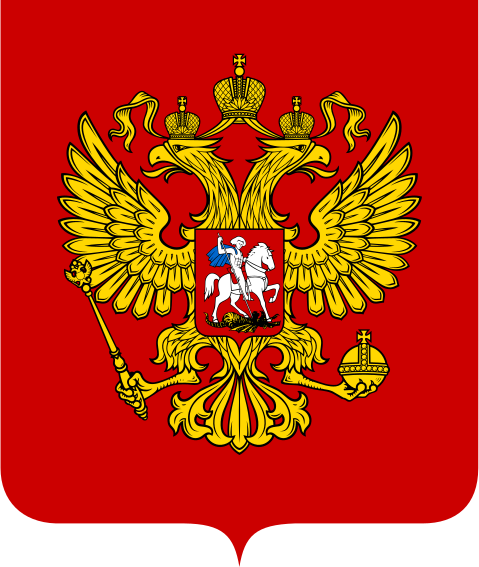
Coat of arms of Russia
Moscow Kremlin

Moscow, Kremlin. Bird's Eye View from the southwest.

360° Panorama of Red Square: Saint Basil (direction: SE), Kremlin with Lenin Mausoleum (from 1930) in front, State Historical Museum (NW) and GUM store. Hardly seen are Voskresensky gates just to the right of museum, Kazan Cathedral just to the left of GUM store and the Minin-Pozharsky monument in front of Saint Basil (originally it was in front of GUM store).
The Moscow Kremlin (Russian: Моско́вский Кремль, tr. Moskovskiy Kreml; IPA: [mɐˈskofskʲɪj krʲɛmlʲ]), usually referred to as the Kremlin, is a fortified complex at the heart of Moscow, overlooking the Moskva River to the south, Saint Basil's Cathedral and Red Square to the east, and the Alexander Garden to the west. It is the best known of the kremlins (Russian citadels) and includes five palaces, four cathedrals, and the enclosing Kremlin Wall with Kremlin towers. The complex serves as the official residence of the President of the Russian Federation.
The name Kremlin means "fortress inside a city",and is often also used as a metonym to refer to the government of the Russian Federation in a similar sense to how the White House is used to refer to the Executive Office of the President of the United States. It had previously been used to refer to the government of the Soviet Union(1922–1991) and its highest members (such as general secretaries, premiers, presidents, ministers, and commissars). "Kremlinology" refers to the study of Soviet and Russian politics.
-VIDEO :Best of Moscow Aerial Drone flight
-VIDEO :Inside Kremlin: What's hidden from public eye? (RT Documentary)

The Tsar Cannon at the Kremlin, Moscow

Tsar Bell, Moscow (Kremlin)
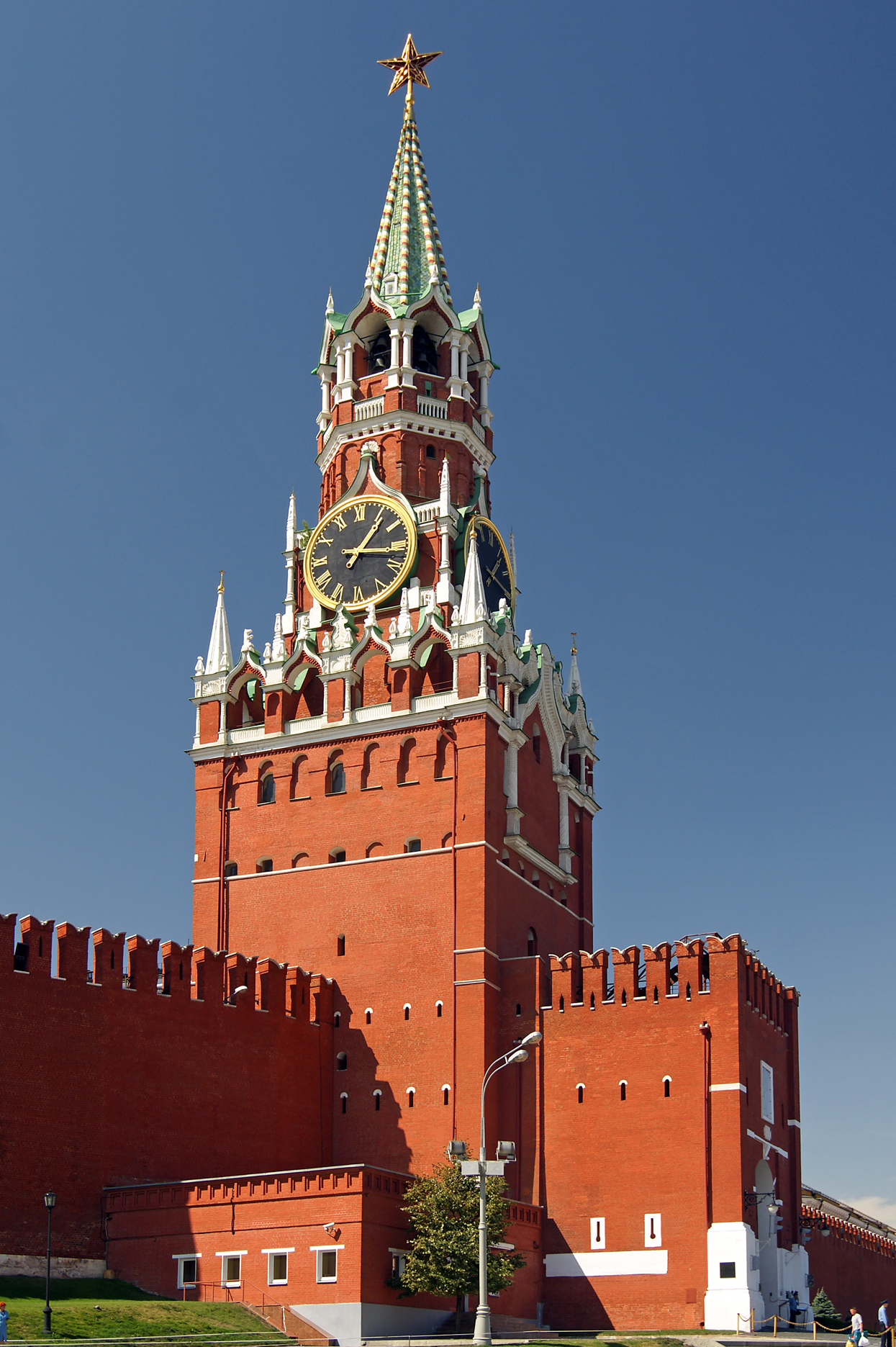
Spasskaya Tower with one of the Kremlin stars on top.(Spaskaja Bašňa (спасская башня) The Saviour tower)

Moscow Kremlin, Ivan the Great Bell Tower
-VIDEO :A Tour of the Tretyakov Gallery in Moscow, Russia

View of Red Square looking northwest from St. Basil's Cathedral
Red Square (Russian: Красная площадь, tr. Krásnaya Plóshchaď; IPA: [ˈkrasnəjə ˈploɕːətʲ]) is a city square (plaza) in Moscow, Russia. It separates the Kremlin, the former royal citadel and currently the official residence of the President of Russia, from a historic merchant quarter known as Kitai-gorod. Red Square is often considered the central square of Moscow, because Moscow's major streets—which connect to Russia's major highways—originate from the square
Saint Basil's Cathedral :
The Cathedral of Vasily the Blessed (Russian: Собор Василия Блаженного), commonly known as Saint Basil's Cathedral, is a church in Red Square in Moscow,Russia. The building, now a museum, is officially known as the Cathedral of the Intercession of the Most Holy Theotokos on the Moat (Russian: Собор Покрова пресвятой Богородицы, что на Рву) or Pokrovsky Cathedral (Russian: Покровский собор). It was built from 1555–61 on orders from Ivan the Terrible and commemorates the capture of Kazan and Astrakhan. A world famous landmark it was the city's tallest building until the completion of the Ivan the Great Bell Tower in 1600.
The original building, known as Trinity Church and later Trinity Cathedral, contained eight side churches arranged around the ninth, central church of Intercession; the tenth church was erected in 1588 over the grave of venerated local saint Vasily (Basil). In the 16th and 17th centuries the church, perceived as the earthly symbol of the Heavenly City,as happens to all churches in Byzantine Christianity, was popularly known as the "Jerusalem" and served as an allegory of the Jerusalem Temple in the annual Palm Sunday parade attended by the Patriarch of Moscow and the tsar.
The building is shaped as a flame of a bonfire rising into the sky, a design that has no analogues in Russian architecture. Dmitry Shvidkovsky, in his book Russian Architecture and the West, states that "it is like no other Russian building. Nothing similar can be found in the entire millennium of Byzantine tradition from the fifth to fifteenth century ... a strangeness that astonishes by its unexpectedness, complexity and dazzling interleaving of the manifold details of its design." The cathedral foreshadowed the climax of Russian national architecture in the 17th century.
As part of the program of state atheism, the church was confiscated from the Russian Orthodox community as part of the Soviet Union's anti-theist campaigns and has operated as a division of the State Historical Museum since 1928. It was completely and forcefully secularized in 1929 and remains a federal property of the Russian Federation. The church has been part of the Moscow Kremlin and Red Square UNESCOWorld Heritage Site since 1990. It is often mislabelled as the Kremlin owing to its location on Red Square in immediate proximity of the Kremlin.

Saint Basil's (finished 1561)
The Cathedral of Intercession of the Virgin on the Moat (Собо́р Покрова́, что на Рву) also known as the Cathedral of Saint Basil the Blessed (Храм Васи́лия Блаже́нного) on the Red Square, Moscow.

Red Square with St. Basil's Cathedral and Moscow Kremlin in background, by Fedor Alekseev, 1801.

Saint Basil's Cathedral, Red square, Moscow

Color scheme of the cathedral is best seen by night.

Kazan Cathedral (1993 reconstruction, it originates back to 1612-25)Rebuilt in 1993 from plans kept in secret after Stalin had the original bulldozed
Kremlin towers in the 19th century.19th-century postcard of St Basil's Slope in Moscow.

View of the Archangel Cathedral from Ivan the Great Bell Tower, with the Cathedral of the Annunciation in the background.


Annunciation Cathedral of the Moscow KremlinThe Cathedral of the Annunciation (Russian: Благовещенский собор, or Blagoveschensky sobor) is a Russian Orthodox church dedicated to the Annunciation of the Theotokos. It is located on the southwest side of Cathedral Square of the Moscow Kremlin in Russia, where it connects directly to the main building of the complex of the Grand Kremlin Palace, adjacent to the Palace of Facets. It was originally the personal chapel for the Muscovite tsars, and its abbot remained a personal confessor of the Russian royal family until the early 20th century
.
The gilded onion domes of the Annunciation Cathedral.Onion domes of Cathedral of the Annunciation, Moscow Kremlin, Russia. Built between 1484-1489
.
The Cathedral of the Dormition in the Moscow Kremlin, (south façade, viewed from Cathedral Square, summer)
The Cathedral of the Dormition (Russian: Успенский Собор, or Uspensky sobor) is a Russian Orthodox church dedicated to the Dormition of the Theotokos. It is located on the north side of Cathedral Square of the Moscow Kremlin in Russia, where a narrow alley separates the north from the Patriarch's Palace with the Twelve Apostles Church. Southwest is Ivan the Great Bell Tower. Separately in the southwest, also separated by a narrow passage from the church, is the Palace of Facets. The Cathedral is regarded as the mother church of Muscovite Russia. In its present form it was constructed between 1475–79 at the behest of the Moscow Grand Duke Ivan III by the Italian architect Aristotele Fioravanti. From 1547 to 1896 it is where the Coronation of the Russian monarch was held. In addition, it is the burial place for most of the Moscow Metropolitans and Patriarchs of the Russian Orthodox Church.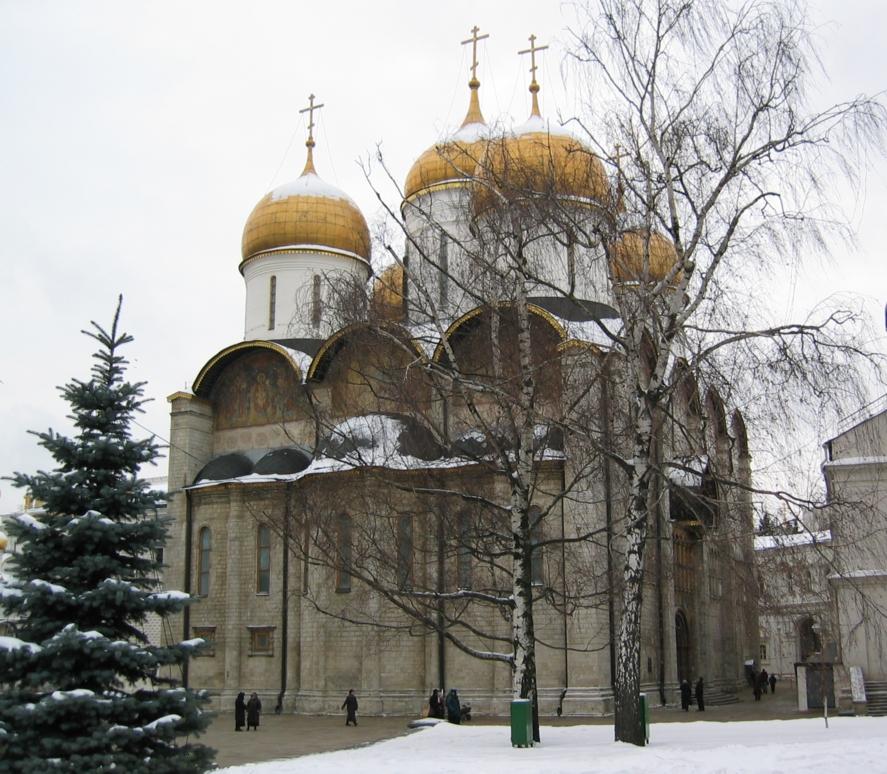
The Cathedral of the Dormition, Moscow Kremlin (east façade, winter).
The Arhangelsky Sobor (cathedral) in the Moscow Kremlin. Photo taken summer 2004.The Cathedral of the Archangel (Russian: Архангельский собор, or Arkhangelsky sobor) is a Russian Orthodox church dedicated to the Archangel Michael. It is located in Cathedral Square of the Moscow Kremlin in Russia between the Great Kremlin Palace and the Ivan the Great Bell Tower. It was the main necropolis of the Tsars of Russiauntil the relocation of the capital to St. Petersburg. It was constructed between 1505 and 1508 under the supervision of an Italian architect Aloisio the New on the spot of an older cathedral, built in 1333

Moscow, Russia. Lavrushinsky Lane. State Tretyakov Gallery.
The State Tretyakov Gallery (Russian: Государственная Третьяковская Галерея, Gosudarstvennaya Tretyâkovskaya Galereya; abbreviated ГТГ, GTG) is an art gallery in Moscow, Russia, the foremost depository of Russian fine art in the world.
The gallery's history starts in 1856 when the Moscow merchant Pavel Mikhailovich Tretyakov acquired works by Russian artists of his day with the aim of creating a collection, which might later grow into a museum of national art. In 1892, Tretyakov presented his already famous collection of approximately 2,000 works (1,362 paintings, 526 drawings, and 9 sculptures) to the Russian nation.[1][2]
The façade of the gallery building was designed by the painter Viktor Vasnetsov in a peculiar Russian fairy-tale style. It was built in 1902–04 to the south from the Moscow Kremlin. During the 20th century, the gallery expanded to several neighboring buildings, including the 17th-century church of St. Nicholas in Tolmachi.
The collection contains more than 130,000 exhibits, ranging from Theotokos of Vladimir and Andrei Rublev's Trinity to the monumental Composition VII by Wassily Kandinskyand the Black Square by Kazimir Malevich.
In 1977 the Gallery kept a significant part of the George Costakis collection.
In May 2012, the Tretyakov Art Gallery played host to the prestigious FIDE World Chess Championship between Viswanathan Anand and Boris Gelfand as the organizers felt the event would promote both chess and art at the same time
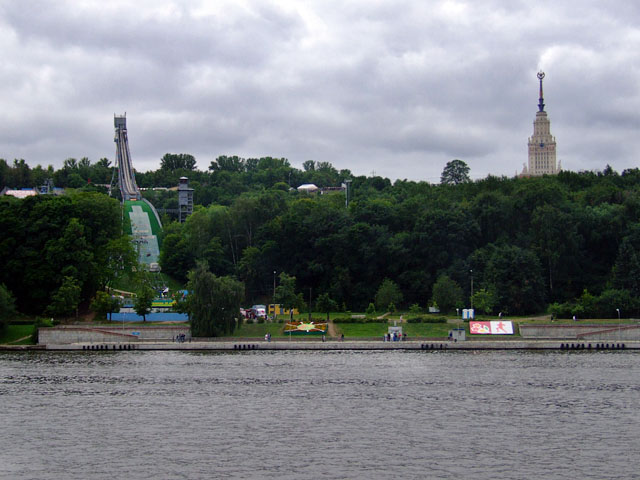
 Lomonosov Moscow State University
Lomonosov Moscow State University (MSU; Russian: Московский государственный университет имени М. В. Ломоносова) is a coeducational and public research university located in Moscow, Russia. It was founded on January 25, 1755 by Mikhail Lomonosov. MSU was renamed after Lomonosov in 1940 and was then known as Lomonosov University. It also claims to house the tallest educational building in the world. Its current rector is Viktor Sadovnichiy.
Lomonosov Moscow State University
Lomonosov Moscow State University (MSU; Russian: Московский государственный университет имени М. В. Ломоносова) is a coeducational and public research university located in Moscow, Russia. It was founded on January 25, 1755 by Mikhail Lomonosov. MSU was renamed after Lomonosov in 1940 and was then known as Lomonosov University. It also claims to house the tallest educational building in the world. Its current rector is Viktor Sadovnichiy.
 metro Arbatskaya (Filyovskaya Line), Arbatskaya Square, Moscow, pentagonal building
The Moscow Metro (Russian: Моско́вский метрополите́н, tr. Moskovsky metropoliten; IPA: [mɐˈskofskʲɪj mʲɪtrəpəlʲɪˈtɛn]) is a rapid transit system serving Moscow, Russia and the neighbouring Moscow Oblast towns of Krasnogorsk, Reutov and Kotelniki. Opened in 1935 with one 11-kilometre (6.8 mi) line and 13 stations, it was the first underground railway system in the Soviet Union. As of 2015, the Moscow Metro has 197 stations (Baumanskaya station is closed for repairs) and its route length is 329 km (204 mi). The system is mostly underground, with the deepest section 74 metres (243 ft) underground at the Park Pobedy station, one of the world's deepest. As of 2013, the Moscow Metro is the busiest metro system outside of Asia and the 6th longest in the world.
metro Arbatskaya (Filyovskaya Line), Arbatskaya Square, Moscow, pentagonal building
The Moscow Metro (Russian: Моско́вский метрополите́н, tr. Moskovsky metropoliten; IPA: [mɐˈskofskʲɪj mʲɪtrəpəlʲɪˈtɛn]) is a rapid transit system serving Moscow, Russia and the neighbouring Moscow Oblast towns of Krasnogorsk, Reutov and Kotelniki. Opened in 1935 with one 11-kilometre (6.8 mi) line and 13 stations, it was the first underground railway system in the Soviet Union. As of 2015, the Moscow Metro has 197 stations (Baumanskaya station is closed for repairs) and its route length is 329 km (204 mi). The system is mostly underground, with the deepest section 74 metres (243 ft) underground at the Park Pobedy station, one of the world's deepest. As of 2013, the Moscow Metro is the busiest metro system outside of Asia and the 6th longest in the world.

Sokolniki station. Opened in 1935 (the first stage)

Mayakovskaya station. Opened in 1938 (the second stage)
 Elektrozavodskaya station. Opened in 1944 (the third stage)
Elektrozavodskaya station. Opened in 1944 (the third stage)
 Kiyevskaya (Koltsevaya Line). Opened in 1954 (the fourth stage).Kievskaya-Koltsevaya Moscow Metro station.
Kiyevskaya (Koltsevaya Line). Opened in 1954 (the fourth stage).Kievskaya-Koltsevaya Moscow Metro station.
 Troparyovo station of Moscow Metro(2014)
Troparyovo station of Moscow Metro(2014)
 Novodevichy Convent, Moscow
Novodevichy Convent, also known as Bogoroditse-Smolensky Monastery (Russian: Новоде́вичий монасты́рь, Богоро́дице-Смоле́нский монасты́рь), is probably the best-known cloister of Moscow. Its name, sometimes translated as the New Maidens' Monastery, was devised to differ from an ancient maidens' convent within the Moscow Kremlin. Unlike other Moscow cloisters, it has remained virtually intact since the 17th century. In 2004, it was proclaimed a UNESCO World Heritage Site.
Novodevichy Convent, Moscow
Novodevichy Convent, also known as Bogoroditse-Smolensky Monastery (Russian: Новоде́вичий монасты́рь, Богоро́дице-Смоле́нский монасты́рь), is probably the best-known cloister of Moscow. Its name, sometimes translated as the New Maidens' Monastery, was devised to differ from an ancient maidens' convent within the Moscow Kremlin. Unlike other Moscow cloisters, it has remained virtually intact since the 17th century. In 2004, it was proclaimed a UNESCO World Heritage Site.
 Cathedral of Our Lady of Smolensk at the Novodevichy Convent (16th century).
Cathedral of Our Lady of Smolensk at the Novodevichy Convent (16th century).
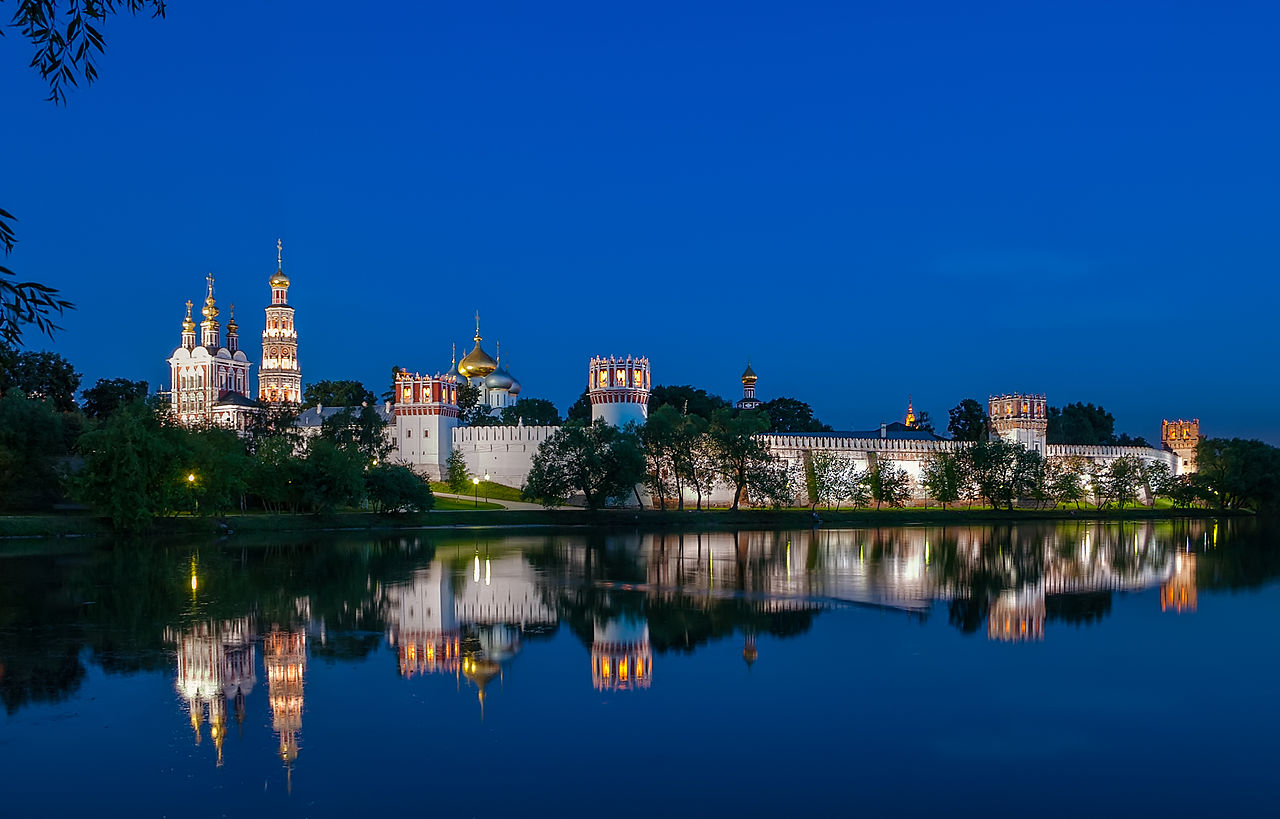 Novodevichy Convent at night, Moscow, Russia
Novodevichy Convent at night, Moscow, Russia

Octagonal bell-tower (1689–90).Moscow, Russia. Novodevichy Convent. Bell Tower.

The new Cathedral of Christ the Saviour as viewed from the bridge over the Moscow River.
The Cathedral of Christ the Saviour (Russian: Храм Христа Спасителя, Khram Khrista Spasitelya) is a cathedral in Moscow, Russia, on the northern bank of the Moskva River, a few blocks southwest of the Kremlin. With an overall height of 103 metres (338 ft),it is the tallest Orthodox Christian church in the world.
The current church is the second to stand on this site. The original church, built during the 19th century, took more than 40 years to build. It was destroyed in 1931 on the order of the Soviet Leader, Joseph Stalin. The demolition was supposed to make way for a colossal Palace of the Soviets to house the country's legislature, the Supreme Soviet of the USSR. Construction started in 1937 but was halted in 1941 when Nazi Germany invaded the Soviet Union during World War II. Its steel frame was disassembled the following year, and the Palace was never built. Following the dissolution of the Soviet Union, the current church was rebuilt on the site during 1995-2000.
The original church was the scene of the 1882 world premiere of the 1812 Overture composed by Tchaikovsky, which became internationally famous.
 Cathedral of Christ the Saviour, Moscow. View from southeast, across the Moscow River.
Cathedral of Christ the Saviour, Moscow. View from southeast, across the Moscow River.

The central dome of the cathedral.Cathedral of Christ the Saviour in Moscow

“Dzerzhinsky Square”. Dzerzhinsky Square in Moscow.Dzerzhinsky Square 1966, with the Dzerzhinsky statue.

Moscow, Russia. Bolshoi Theatre.
The Bolshoi Theatre is a historic theatre in Moscow, Russia, designed by architectJoseph Bové, which holds performances of ballet and opera. The theatre's original name was the Imperial Bolshoi Theatre of Moscow, while the St. Petersburg Bolshoi Theatre (demolished in 1886), was called the Imperial Bolshoi Kamenny Theatre.
At that time, all Russian theatres were imperial property. Moscow and St. Petersburg each had only two theatres, one intended for opera and ballet (these were known as theBolshoi Theatres), and one for plays (tragedies and comedies). Because opera and ballet were considered nobler than drama, the opera houses were named "Grand Theatres" ("Bolshoi" is Russian for "large" or "grand") and the drama theatres were called the "Smaller Theatre" ("Maly" is Russian for "small", "lesser", or "little").
The Bolshoi Ballet and Bolshoi Opera are amongst the oldest and most renowned ballet and opera companies in the world. It is by far the world's biggest ballet company, having more than 200 dancers. The theatre is the parent company of The Bolshoi Ballet Academy, a world-famous leading school of ballet. It has a branch at the Bolshoi Theatre School in Joinville, Brazil.
The main building of the theatre, rebuilt and renovated several times during its history, is a landmark of Moscow and Russia (its iconic neoclassical facade is depicted on theRussian 100-ruble banknote). On 28 October 2011, the Bolshoi was re-opened after an extensive six-year renovation.The official cost of the renovation is 21 billion rubles ($688 million). However, other Russian authorities and other people connected to it claimed much more public money was spent. The renovation included restoring acoustics to the original quality (which had been lost during the Soviet Era), as well as restoring the original Imperial decor of the Bolshoi.
 Bolshoi Theatre in 2006 before the renovation
Bolshoi Theatre in 2006 before the renovation
 Performance in the Bolshoi Theatre (1856)
Performance in the Bolshoi Theatre (1856)
 Alexander III of Russia and his family at the Bolshoi, 1883
Alexander III of Russia and his family at the Bolshoi, 1883
 Auditorium of the Bolshoi Theatre .Moscow, Russia: Inside the Bolshoi Theatre, 10 April 2005. Taken during the break of Tchaikovsky's Nutcracker ballet.
Auditorium of the Bolshoi Theatre .Moscow, Russia: Inside the Bolshoi Theatre, 10 April 2005. Taken during the break of Tchaikovsky's Nutcracker ballet.

 is the main tower with a through-passage on the eastern wall of the Moscow Kremlin, which overlooks the Red Square.
is the main tower with a through-passage on the eastern wall of the Moscow Kremlin, which overlooks the Red Square.
 The Saviour tower
The Saviour tower


Lomonosov Moscow State University (MSU; Russian: Московский государственный университет имени М. В. Ломоносова) is a coeducational and public research university located in Moscow, Russia. It was founded on January 25, 1755 by Mikhail Lomonosov. MSU was renamed after Lomonosov in 1940 and was then known as Lomonosov University. It also claims to house the tallest educational building in the world. Its current rector is Viktor Sadovnichiy.

metro Arbatskaya (Filyovskaya Line), Arbatskaya Square, Moscow, pentagonal building
The Moscow Metro (Russian: Моско́вский метрополите́н, tr. Moskovsky metropoliten; IPA: [mɐˈskofskʲɪj mʲɪtrəpəlʲɪˈtɛn]) is a rapid transit system serving Moscow, Russia and the neighbouring Moscow Oblast towns of Krasnogorsk, Reutov and Kotelniki. Opened in 1935 with one 11-kilometre (6.8 mi) line and 13 stations, it was the first underground railway system in the Soviet Union. As of 2015, the Moscow Metro has 197 stations (Baumanskaya station is closed for repairs) and its route length is 329 km (204 mi). The system is mostly underground, with the deepest section 74 metres (243 ft) underground at the Park Pobedy station, one of the world's deepest. As of 2013, the Moscow Metro is the busiest metro system outside of Asia and the 6th longest in the world.
Sokolniki station. Opened in 1935 (the first stage)

Mayakovskaya station. Opened in 1938 (the second stage)

Elektrozavodskaya station. Opened in 1944 (the third stage)

Kiyevskaya (Koltsevaya Line). Opened in 1954 (the fourth stage).Kievskaya-Koltsevaya Moscow Metro station.

Troparyovo station of Moscow Metro(2014)

Novodevichy Convent, Moscow
Novodevichy Convent, also known as Bogoroditse-Smolensky Monastery (Russian: Новоде́вичий монасты́рь, Богоро́дице-Смоле́нский монасты́рь), is probably the best-known cloister of Moscow. Its name, sometimes translated as the New Maidens' Monastery, was devised to differ from an ancient maidens' convent within the Moscow Kremlin. Unlike other Moscow cloisters, it has remained virtually intact since the 17th century. In 2004, it was proclaimed a UNESCO World Heritage Site.

Cathedral of Our Lady of Smolensk at the Novodevichy Convent (16th century).


Octagonal bell-tower (1689–90).Moscow, Russia. Novodevichy Convent. Bell Tower.

The new Cathedral of Christ the Saviour as viewed from the bridge over the Moscow River.
The Cathedral of Christ the Saviour (Russian: Храм Христа Спасителя, Khram Khrista Spasitelya) is a cathedral in Moscow, Russia, on the northern bank of the Moskva River, a few blocks southwest of the Kremlin. With an overall height of 103 metres (338 ft),it is the tallest Orthodox Christian church in the world.
The current church is the second to stand on this site. The original church, built during the 19th century, took more than 40 years to build. It was destroyed in 1931 on the order of the Soviet Leader, Joseph Stalin. The demolition was supposed to make way for a colossal Palace of the Soviets to house the country's legislature, the Supreme Soviet of the USSR. Construction started in 1937 but was halted in 1941 when Nazi Germany invaded the Soviet Union during World War II. Its steel frame was disassembled the following year, and the Palace was never built. Following the dissolution of the Soviet Union, the current church was rebuilt on the site during 1995-2000.
The original church was the scene of the 1882 world premiere of the 1812 Overture composed by Tchaikovsky, which became internationally famous.


The central dome of the cathedral.Cathedral of Christ the Saviour in Moscow

“Dzerzhinsky Square”. Dzerzhinsky Square in Moscow.Dzerzhinsky Square 1966, with the Dzerzhinsky statue.

Moscow, Russia. Bolshoi Theatre.
The Bolshoi Theatre is a historic theatre in Moscow, Russia, designed by architectJoseph Bové, which holds performances of ballet and opera. The theatre's original name was the Imperial Bolshoi Theatre of Moscow, while the St. Petersburg Bolshoi Theatre (demolished in 1886), was called the Imperial Bolshoi Kamenny Theatre.
At that time, all Russian theatres were imperial property. Moscow and St. Petersburg each had only two theatres, one intended for opera and ballet (these were known as theBolshoi Theatres), and one for plays (tragedies and comedies). Because opera and ballet were considered nobler than drama, the opera houses were named "Grand Theatres" ("Bolshoi" is Russian for "large" or "grand") and the drama theatres were called the "Smaller Theatre" ("Maly" is Russian for "small", "lesser", or "little").
The Bolshoi Ballet and Bolshoi Opera are amongst the oldest and most renowned ballet and opera companies in the world. It is by far the world's biggest ballet company, having more than 200 dancers. The theatre is the parent company of The Bolshoi Ballet Academy, a world-famous leading school of ballet. It has a branch at the Bolshoi Theatre School in Joinville, Brazil.
The main building of the theatre, rebuilt and renovated several times during its history, is a landmark of Moscow and Russia (its iconic neoclassical facade is depicted on theRussian 100-ruble banknote). On 28 October 2011, the Bolshoi was re-opened after an extensive six-year renovation.The official cost of the renovation is 21 billion rubles ($688 million). However, other Russian authorities and other people connected to it claimed much more public money was spent. The renovation included restoring acoustics to the original quality (which had been lost during the Soviet Era), as well as restoring the original Imperial decor of the Bolshoi.

Bolshoi Theatre in 2006 before the renovation

Performance in the Bolshoi Theatre (1856)

Alexander III of Russia and his family at the Bolshoi, 1883

Auditorium of the Bolshoi Theatre .Moscow, Russia: Inside the Bolshoi Theatre, 10 April 2005. Taken during the break of Tchaikovsky's Nutcracker ballet.


is the main tower with a through-passage on the eastern wall of the Moscow Kremlin, which overlooks the Red Square.

The Saviour tower
-VIEW :Behind the Iron Curtain: Moscow 1960’s

Red Square

-Moscow State Historical Museum, Red Square.
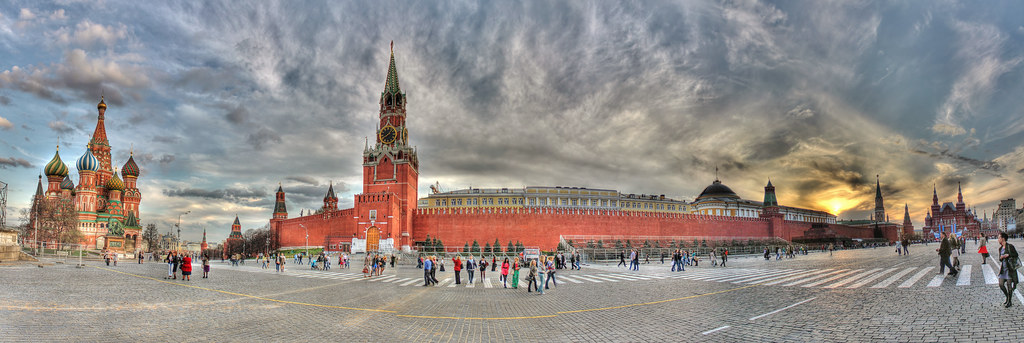
Red Square sunset HDR Panorama | by Rich pick

Imperial Standard of the Emperor of Russia, used from 1858 to 1917.

Red Square sunset HDR Panorama | by Rich pick

Imperial Standard of the Emperor of Russia, used from 1858 to 1917.
-VIDEO :Russia - Land of the Tsars_playlist.
Portrait by the artist Georges Becker of the coronation of Tsar Alexander III and Empress Maria Fyodorovna, which took place on 27 May [O.S. 15 May] 1883 at the Uspensky Sobor of the Moscow Kremlin. On the left of the dais can be seen his young son and heir, the Tsesarevich Nicolas, and behind Nicholas can be seen a young Grand Duke George.
Tsar (1547–1721)
The Tsardom of Russia (Русское царство or, in Hellenized form, Российское царство), also known as the Tsardom of Muscovy, was the name of the centralized Russian state from Ivan IV's assumption of the title of Tsar in 1547 until Peter the Great's foundation of the Russian Empire in 1721.
From 1550 to 1700, Russia grew 35,000 km2 (about the size of the Netherlands) a year. The period includes the upheavals of the transition from the Rurik to theRomanov dynasties, drawn-out military conflict with the Polish–Lithuanian Commonwealth as well as the Russian conquest of Siberia, leading up to the 42-year reign of Peter the Great, who ascended in 1682 and transformed the Tsardom into a major European power. After a military victory over Sweden and Poland, he implementedsubstantial reforms and proclaimed the Russian Empire (Russian: Российская Империя) in 1721, making it a recognized power in Europe.
Reception of the Tsar of Russia in the Moscow Kremli
-VIDEO :CATHERINE THE GREAT Playlist - HD - English subtitles

Patriarch Nikon and Tsar Alexis in the Cathedral of the Archangel
en:Alexander Litovchenko (1835-90). Young en:Tsar Alexis Praying Before the Relics of en:Metropolitan Philip in the Presence of en:Patriarch Nikon.
Grand Kremlin Palace

Grand Kremlin Palace, Moscow
The Grand Kremlin Palace (Большой Кремлёвский дворец; Bolshoy Kremlyovskiy Dvorets), also translated Great Kremlin Palace, was built from 1837 to 1849 in Moscow, Russia on the site of the estate of the Grand Princes, which had been established in the 14th century on Borovitsky Hill. Designed by a team of architects under the management of Konstantin Thon, it was intended to emphasise the greatness of Russian autocracy. Konstantin Thon was also the architect of the Kremlin Armoury and the Cathedral of Christ the Savior.
The Grand Kremlin Palace was formerly the tsar's Moscow residence. Its construction involved the demolition of the previous Baroque palace on the site, designed by Rastrelli, and the Church of St. John the Baptist, constructed to a design by Aloisio the New in place of the first church ever built in Moscow.
Thon's palace is 125 metres long, 47 metres high, and has a total area of about 25,000 square metres. It includes the earlier Terem Palace, nine churches from the 14th, 16th, and 17th centuries, the Holy Vestibule, and over 700 rooms. The buildings of the Palace form a rectangle with an inner courtyard. The building appears to be three stories, but is actually two. The upper floor has two sets of windows. The west building of the Palace held state reception halls and the imperial family's private chambers .
Its five reception halls (Georgievsky, Vladimirsky, Aleksandrovsky, Andreyevsky, and Ekaterininsky) are named for orders of the Russian Empire: the Orders of St.George, Vladimir, Alexander, Andrew, and Catherine. Georgievsky Hall is used today for state and diplomatic receptions and official ceremonies. International treaties are signed at the Vladimirsky Hall Such as the instance on June 1, 1988, U.S. President Ronald Reagan and Soviet General Secretary Mikhail Gorbachev signed the INF Treaty ratification. It also leads to the Palace of Facets, the Tsarina's Golden Chamber, Terem Palace, the Winter Palace, and the Palace of Congresses. Aleksandrovsky Hall and Andreyevsky Hall were combined in Soviet times to be used for meetings and conferences of the Supreme Soviet of the USSR; they were lavishly restored in accordance with Thon's designs in the 1990s. Currently it is the official residence of the President of the Russian Federation though it is rarely used for this purpose.
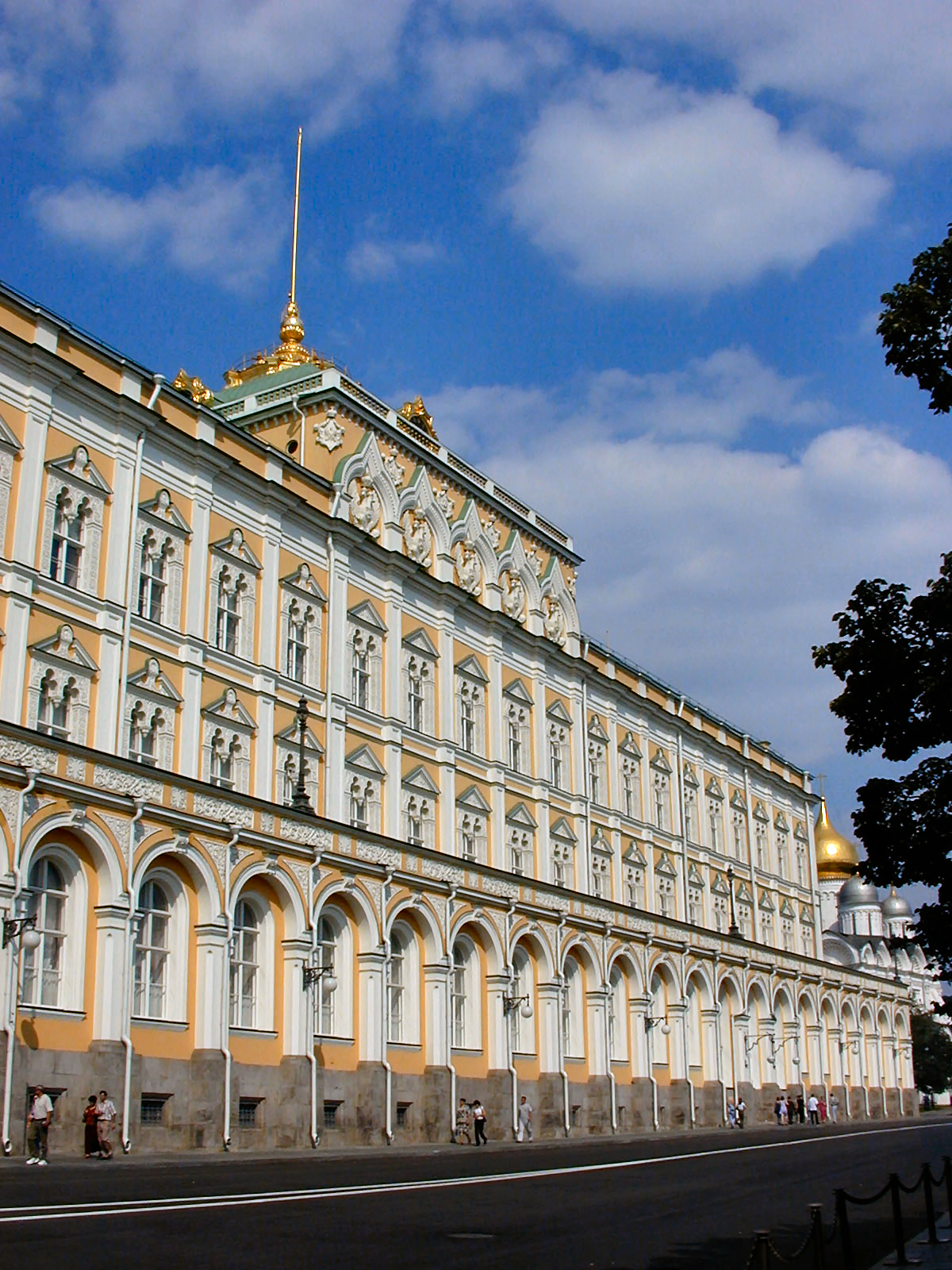
The exterior of the Grand Kremlin Palace incorporates many details characteristic of medieval Russian and Byzantine architecture

Grand Kremlin Palace Facade the Armoury and Borovitskaya Tower at lower left

Nicholas I in front of the Grand Kremlin Palace
Artist: Yegor Botkin Title: Portrait of Nicholas I Date: 1856 Medium: oil Sourse
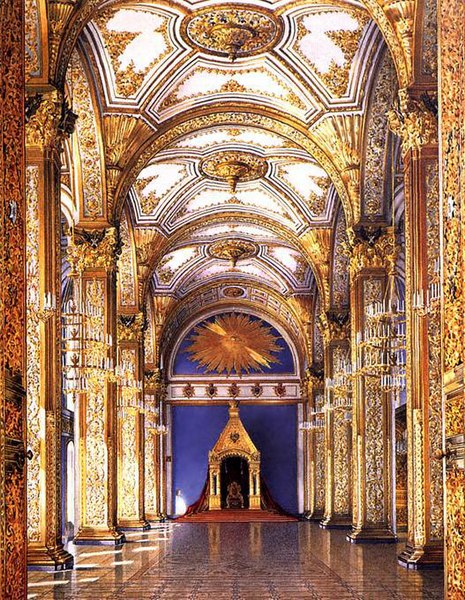

The Hall of the Order of St. George in the Grand Kremlin Palace
Moscow’s Red Heart: The Kremlin
Ivan the Great: The man who made the Kremlin
Ivan III (1462-1505) earned his title ‘Great’ by trebling the size of territory ruled from Moscow and ending subjection to the Tartar Golden Horde. Ivan’s ambitions were imperial and to legitimise Moscow’s position as the new Byzantium, in 1472 he chose his second wife, Sofiya Palaeologue, closest surviving heir to the last Byzantine emperor. According to contemporary accounts Sofiya was somewhat Rubenesque and broke the bed on her first night in the Moscow marital chamber; however Ivan was not marrying for lust and Sofiya being intelligent and ambitious, exercised great influence in their 21 year marriage, during which she provided the tsar with 11 children. The Byzantine double-headed eagle and titles including ‘tsar’ (Caesar) and ‘autocrat’ were adopted, which now had a sacred mission to save the Christian world: ‘..for two Romes have fallen, the third (Moscow) stands and there will be no fourth’.

Palace Square, Saint Petersburg
Palace Square backed by the General Staff arch and building, as the main square of the Russian Empire it was the setting of many events of historic significance
Saint Petersburg (Russian: Санкт-Петербу́рг, tr. Sankt-Peterburg; is the second largest city in Russia. It is politically incorporated as a federal subject (a federal city). It is located on the Neva River at the head of the Gulf of Finland on the Baltic Sea. In 1914 the name of the city was changed from Saint Petersburg to Petrograd (Russian: Петрогра́д; IPA: [pʲɪtrɐˈgrat]), in 1924 to Leningrad (Russian: Ленингра́д; IPA: [lʲɪnʲɪnˈgrat]), and in 1991, back to Saint Petersburg. In Russian literature, informal documents, and discourse, the word "Saint" is usually omitted, leaving "Petersburg". In casual conversation Russians may drop the "burg" as well, referring to it as "Piter".
Saint Petersburg was founded by Tsar Peter the Great on May 27 [O.S. 16] 1703. Between 1713–1728 and 1732–1918, Saint Petersburg was the imperial capital of Russia. In 1918, the central government bodies moved from Saint Petersburg (then named Petrograd) to Moscow. It is Russia's 2nd largest city after Moscow with 5 million inhabitants (2012) and the fourth most populated federal subject.Saint Petersburg is a major European cultural center, and also an important Russian port on the Baltic Sea.
Saint Petersburg is often described as the most Westernized city of Russia, as well as its cultural capital. It is the northernmost city in the world with a population of over one million.The Historic Centre of Saint Petersburg and Related Groups of Monuments constitute a UNESCO World Heritage Site. Saint Petersburg is also home to The Hermitage, one of the largest art museums in the world. A large number of foreign consulates, international corporations, banks, and other businesses are located in Saint Petersburg.

The Neva River flows through much of the centre of the city. Left – the Spit of Vasilievsky Island, center – River Neva, Peter and Paul Fortress and Trinity Bridge, right – Palace Embankmentwith the Winter Palace

The Bronze Horseman at Senatskaya Square in Saint Petersburg, Russia

Saint Petersburg (Admiralty building and spire in foreground) long served as the capital of the Russian Empire
View on Admiralty from Saint Isaac's Cathedral in Saint Petersburg (Russia). 19th-century photochrome print (1890—1900)

View from the Colonnade, St. Isaac's Cathedral, Saint Petersburg


Cathedral of the Resurrection ("Savior on the Blood") (St. Petersburg and the Leningrad Region, St. Petersburg, Griboyedov Canal Embankment


Saint Petersburg, Russia. Nevsky Avenue. Kazan Cathedral.
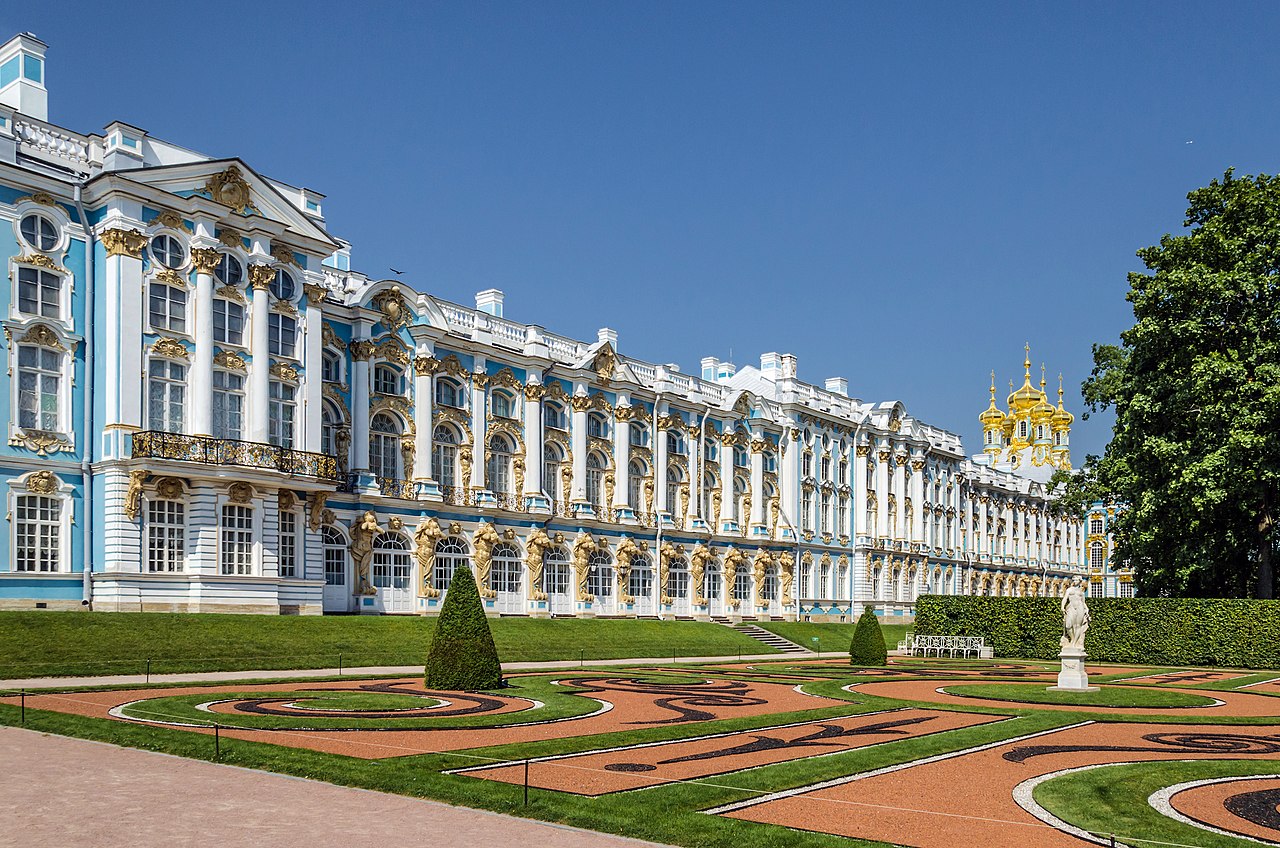
Catherine Palace in Tsarskoe Selo, Saint Petersburg
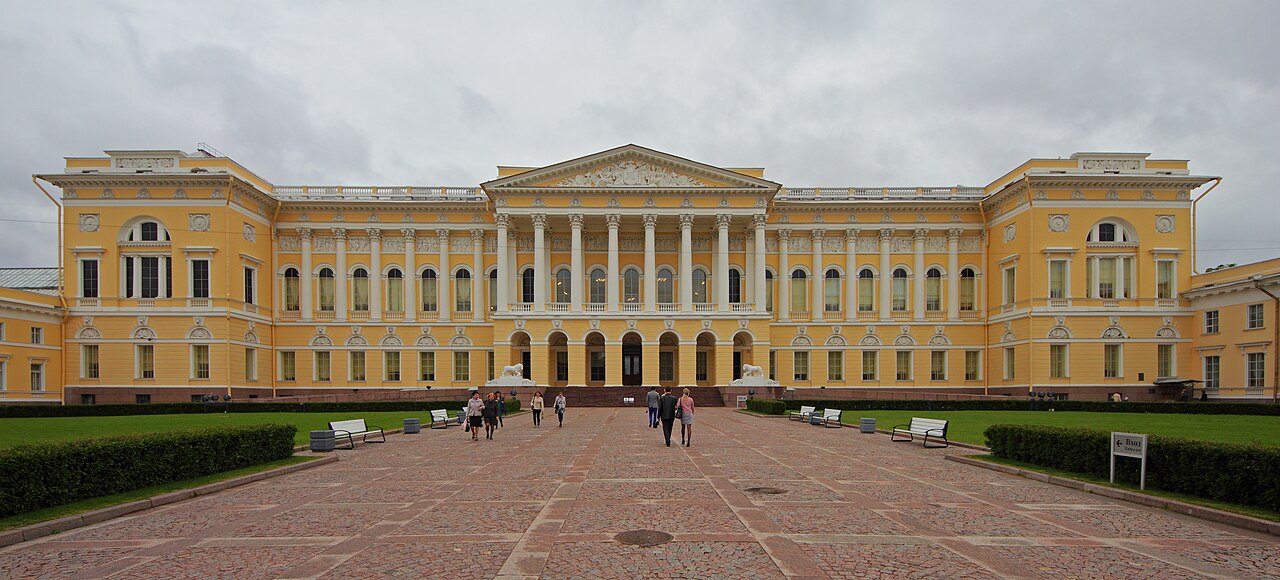
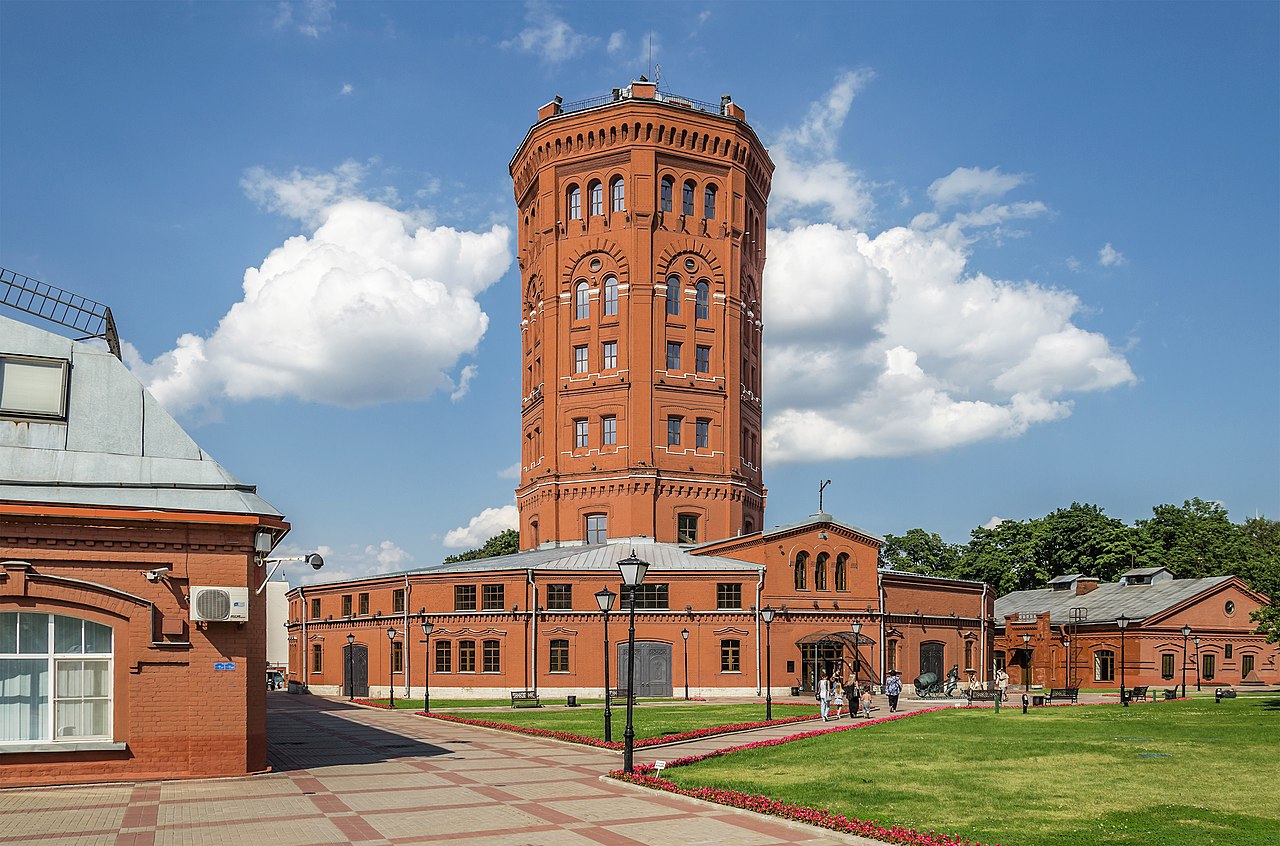
Museum of Water_The Universe of Water Museum complex in Saint Petersburg

The Grand Cascade at Peterhof.


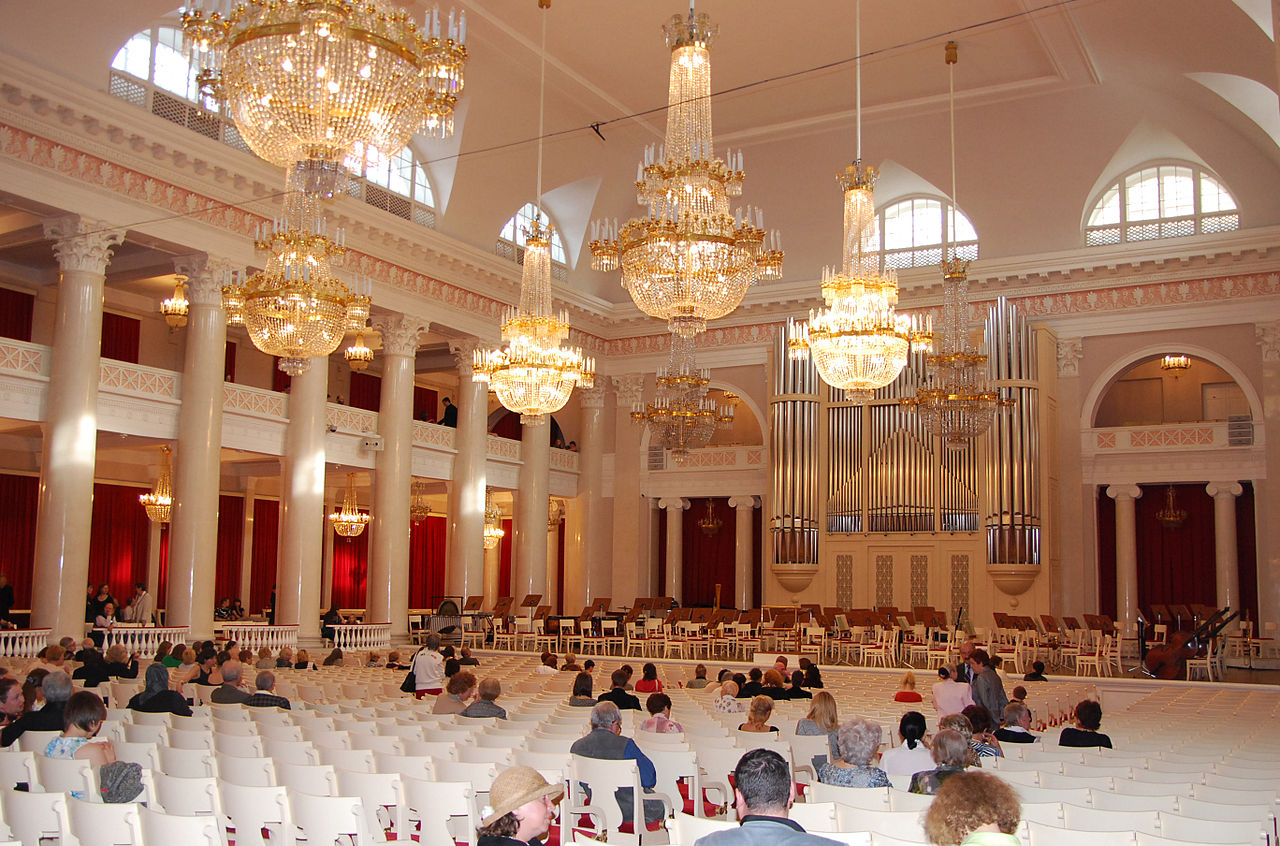
The Bolshoi Zal (Grand Hall) of Saint Petersburg Philharmonia

Saint Petersburg, yachts on the Neva River.Saint Petersburg. Yachts on Neva river. On the second plan: a complex of buildings of the Hermitage Museum (from right to left: the Winter palace, the Small Hermitage, the Old Hermitage with transitive gallery over the Winter canal, Hermitage theatre.
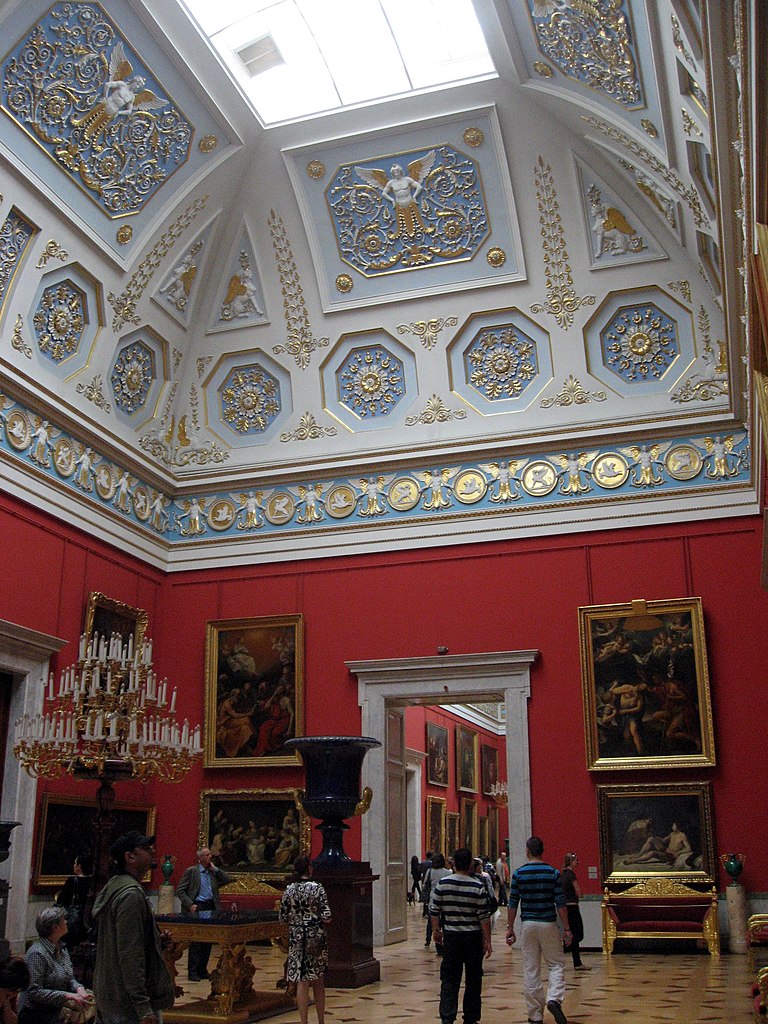
The Small Italian Skylight Room in the Hermitage Museum
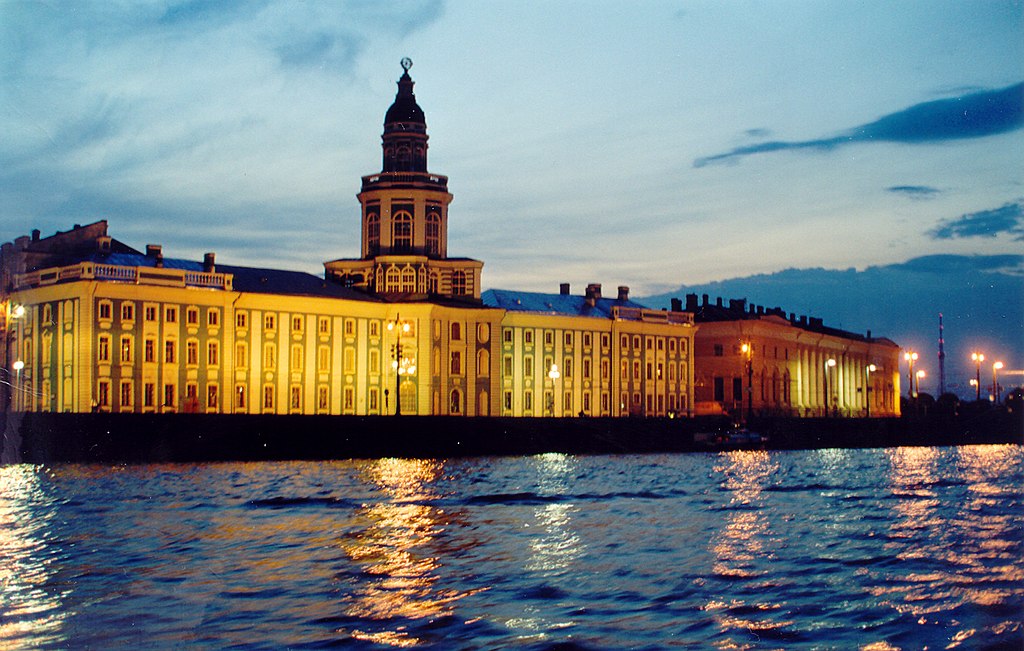
Saint Petersburg, Russia - White Nights with Kunstkammer


The Alexandrinsky Theatre (Russian: Александринский театр) or Russian State Pushkin Academy Drama Theater (Российский государственный академический театр драмы им. А. С. Пушкина) is a theatre in Saint Petersburg, Russia.
The Alexandrinsky Theatre was built for the Imperial troupe of Petersburg (Imperial troupe was founded in 1856).
The theatre was opened on 31 August (12 September), 1832.
Since 1832, the theatre has occupied an Empire-style building that Carlo Rossi designed. It was built in 1828-1832 on Alexandrinsky Square (now Ostrovsky Square), which is situated on Nevsky Prospekt between the National Library of Russia and Anichkov Palace. The theatre and the square were named after Empress consort Alexandra Feodorovna. The building is part of the UNESCO World Heritage Site Historic Centre of Saint Petersburg and Related Groups of Monuments.
It was one of the many theatres of the Imperial troupe. Dramas, operas and ballets were on the stage. Only in 1880-ies, the theatre has become dramatic and tragedy filled.
The premières of numerous Russian plays have been performed at the stage of the Alexandrinsky, including plays by Alexandr Griboyedov, Alexander Ostrovsky, and Anton Chekhov. Famous directors who have staged work there include Vsevolod Meyerhold, Grigori Kozintsev, Georgy Tovstonogov, and Nikolay Akimov.
On 30 August 2006 the theatre reopened after a reconstruction.
-VIDEO :Russian traditional folk dance
Classical Russian Ballet

Ploshchad Pobedy (Victory Square) and panorama of Moskovskiy Prospekt

Narva Triumphal Gate on Ploshchad Stachek
The Narva Triumphal Arch was erected as a memorial to the war of 1812. A wooden triumphal arch designed according to the plan of famous Italian classical architect Dzhakomo Quarenghi. Quarenghi also built the Concert Hall pavilion (1782-88), Alexander Palace in Pushkin (1792-1800) and the Smolny Institute (1806-08) in St. Petersburg. The Narva Triumphal Arch was specially constructed on the Narva highway to greet the soldiers who were returning from abroad after their victory over Napoleon. The arch was located approximately halfway between Ploshchad Stachek and Obvodny Canal.
Ploshchad Pobedy (Victory Square) and panorama of Moskovskiy Prospekt
Narva Triumphal Gate on Ploshchad Stachek
The Narva Triumphal Arch was erected as a memorial to the war of 1812. A wooden triumphal arch designed according to the plan of famous Italian classical architect Dzhakomo Quarenghi. Quarenghi also built the Concert Hall pavilion (1782-88), Alexander Palace in Pushkin (1792-1800) and the Smolny Institute (1806-08) in St. Petersburg. The Narva Triumphal Arch was specially constructed on the Narva highway to greet the soldiers who were returning from abroad after their victory over Napoleon. The arch was located approximately halfway between Ploshchad Stachek and Obvodny Canal.

South side, view from the Hermitage Pavilion
Catherine Palace in Tsarskoye Selo (Pushkin), south of St Petersburg, Russia
.
Tsarskoye Selo (Pushkin), Saint-Petersburg, Russia. The Catherine Palace
Catherine Palace st Petersburg Russia
Tsarskoe Selo near Saint Petersburg, Russia

Grand Peterhof Palace and the Grand Cascade.
The Peterhof Palace (Russian: Петерго́ф; IPA: [pʲɪtʲɪrˈɡof], Dutch for Peter's Court) is a series of palaces and gardens located in Petergof, Saint Petersburg, Russia, laid out on the orders of Peter the Great. These palaces and gardens are sometimes referred as the "Russian Versailles". The palace-ensemble along with the city center is recognized as a UNESCO World Heritage Site.

Peterhof: the Samson Fountain and Sea Channel.

French style interior.The Peterhof Palace

A portion of the Grand Cascade

Samson and the Lion, by Mikhail Kozlovsky

The Upper Gardens of Peterhof

Another view of the Grand Cascade

Poseidon and a dome at the palace
Grand Cascade in Peterhof
-VIDEO :Peterhof - The Russian Versailles - Part 1
-Peterhof - The Russian Versailles - Part 2
Lower Park With Canal And Golden Statues Of The Peterhof. Russia .
The Peterhof Palaces with its gardens, located in Saint Petersburg, laid out on the orders of Peter the Great are sometimes referred as the "Russian Versailles"
The Church of the Savior on Spilled Blood (Russian: Церковь Спаса на Крови, Tserkovʹ Spasa na Krovi) is one of the main sights of St. Petersburg,Russia. It is also variously called the Church on Spilt Blood (Russian: Церковь на Крови, Tserkov’ na Krovi) and the Cathedral of the Resurrection of Christ(Russian: Собор Воскресения Христова, Sobor Voskreseniya Khristova), its official name._ St. Petersburg, Russia
-VIDEO :St. Petersburg Palaces
Russia, St. Petersburg, Banking bridge on the Griboedov c
-VIDEO : St. Petersburg, Russia (2013)
-VIDEO :St Petersburg Vacation Travel Video Guide.Great Destinations(2015)
After the maritime victory over the Swedish army, Peter I the Great decided that he is going to build a city on the small islands and lagoons of the mouth of the river Neva. The Russian, Italian and French masters dreamed wonderful Baroque and Classicist palaces to the banks of the canals. The Church of the Savior on Blood, the Saint Isaac's Cathedral, the Peter and Paul Fortress, the blue white and gold Smolny and the Winter Palace all make the city of white nights unforgettable. The Hermitage has one of the largest art collections of the world, but for those who find this less than enough, there is the Russian Museum, and the suburbs of Peterhof, Pushkin and Pavlovsk.
-VIDEO :Cathedral of the Resurrection in St. Petersburg, Russia_(2015)or "The Savior on the Spilled Blood", in Saint Petersburg, Russia.
The Church of the Savior on Spilled Blood (Russian: Церковь Спаса на Крови, Tserkovʹ Spasa na Krovi) is one of the main sights of St. Petersburg,Russia. It is also variously called the Church on Spilt Blood (Russian: Церковь на Крови, Tserkov’ na Krovi) and the Cathedral of the Resurrection of Christ(Russian: Собор Воскресения Христова, Sobor Voskreseniya Khristova), its official name._ St. Petersburg, Russia Cathédrale Saint-Sauveur-sur-le-Sang-Versé de Saint-Pétersbourg.
Cathédrale Saint-Sauveur-sur-le-Sang-Versé de Saint-Pétersbourg.
After the maritime victory over the Swedish army, Peter I the Great decided that he is going to build a city on the small islands and lagoons of the mouth of the river Neva. The Russian, Italian and French masters dreamed wonderful Baroque and Classicist palaces to the banks of the canals. The Church of the Savior on Blood, the Saint Isaac's Cathedral, the Peter and Paul Fortress, the blue white and gold Smolny and the Winter Palace all make the city of white nights unforgettable. The Hermitage has one of the largest art collections of the world, but for those who find this less than enough, there is the Russian Museum, and the suburbs of Peterhof, Pushkin and Pavlovsk.
The Church of Our Savior, St. Petersburg, Russia.

No comments:
Post a Comment